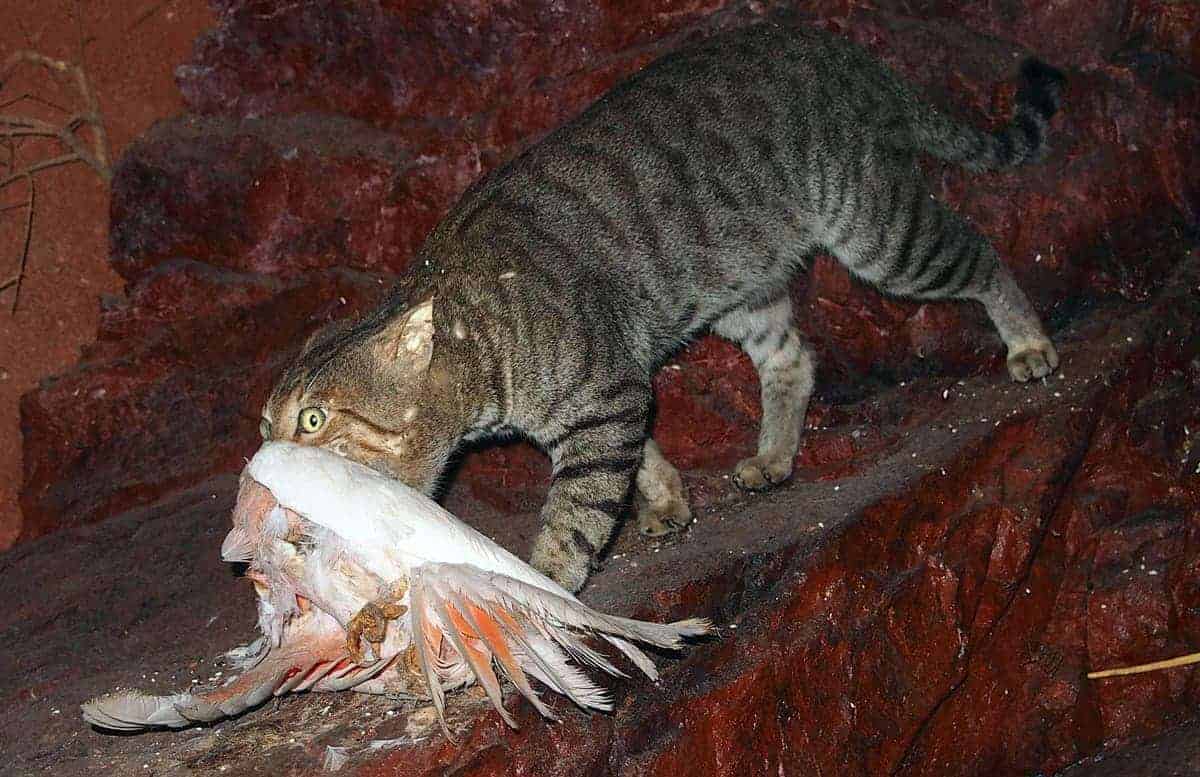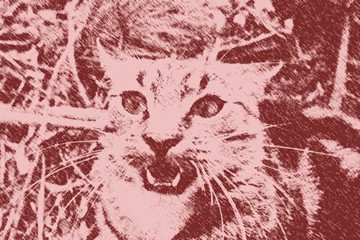The Invasive Species Council has slammed a new application to import Bengal cats – a hybrid of Asian leopard cats and domestic cats – warning it would mean deliberately unleashing more genetic monsters into a country with wildlife already being devastated by feral and roaming pet cats.
‘This crazy proposal, if approved, would reopen the door for allowing more of these genetic monsters into Australia, at a time when our wildlife is already buckling under the pressure of domestic cats. To deliberately import them, knowing how this super-species could intensify the problem, is sheer lunacy,’ Invasive Species Council CEO Jack Gough said.
‘Domestic roaming cats already kill more than 300 million native animals every year in Australia. Feral cats have driven at least 25 species to extinction. Now imagine crossing them with an Asian leopard cat – the result is a hybrid killing machine.
‘In March this year, Bengal cats were rightly removed from the live import list as a ‘very high priority’ of the national Feral Cat Threat Abatement Plan. The Environment Department acknowledged that hybrids pose unique and dangerous risks.
‘The fact that our biosecurity system even contemplates a backflip on this is a clear sign of a weak system that needs reform.
‘If this is allowed, then we have to ask what’s next? Will foxes be allowed to be imported?
‘This Bengal cat proposal shows why Australia desperately needs reforms of live import processes as part of Minister Watt’s review of environmental law.
‘This should include a list for prohibited animals and clear powers for the Minister to say ‘no’ upfront to unacceptable proposals, without having to waste already limited departmental resources on timely assessments.
‘Bengal cats are hybrids of the domestic cat and Asian leopard cat. They are athletic, powerful climbers with adaptations for living in rainforests. When Bengal cats escape – as is inevitable – or breed with feral cats, they will add genes to the feral cat population that might adapt cats to more readily live in rainforests, hunt wildlife in trees, swim to cat-free islands, or scale the fences that protect threatened mammals inside havens.
‘Reversing that decision now would be reckless beyond belief. At a time when governments are struggling to control feral cats, why would we open the gates to a genetic monster that could make the problem even worse?
‘If we let more of these hybrid killing machines into Australia, we’ll never undo the damage once they inevitably get out into the bush. We urge federal Environment Minister Murray Watt to do the responsible thing and block this ridiculous proposal and prioritise reform of live imports as part of the EBPC Act reforms.’
Media inquiries: (02) 8006 5004
Background:
- Bengal cats are a designer hybrid – a cross between domestic cats and Asian leopard cats.
- They were permitted into Australia until March this year if the owner could demonstrate the hybrid was 5 generations or more removed from the leopard cat forebear.
- They were removed from the list of permitted imports to Australia as a ‘very high’ priority of the feral cat threat abatement plan. The plan warns that hybrid cats ‘have different body sizes, physical abilities, and behaviours that could give them access to native species that are currently less susceptible to impacts from the feral cat’.
- It has been found that imported Bengal cats ‘have often had a high percentage of Asian leopard cat genes’.
- Asian leopard cats are rainforest animals and agile climbers. They can also swim. So, adding more leopard cat genes to the Bengal cat population in Australia and increasing their genetic diversity could add to the threat for Australian wildlife.
- When Bengal cats escape – as is inevitable – or breed with feral cats, they will add genes to the feral cat population that might adapt cats to more readily live in rainforests, hunt wildlife in trees, swim to cat-free islands, or scale fences that protect threatened mammals.
- The Australian Government regulates what animals are permitted into Australia by maintaining a live import list of animals and assessing applications to add new species to that list. The Environment Minister is the decision-maker.
- In 2008, Environment Minister Peter Garrett rejected an application to allow the importation to Australia of savannah cats – hybrids of domestic cats and African servals – on the grounds that they could increase the predatory risk of feral cats.
- The previous inclusion of the Bengal cat on the live import list was not subject to a proper environmental assessment, because it was approved prior to the EPBC Act. For the same reason, the current live import list includes hundreds of other animal species that have also never been assessed and represent a major risk to the Australian environment. This is why reforms of the EPBC Act should include reforms of live import provisions as a high priority.








